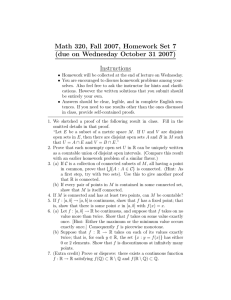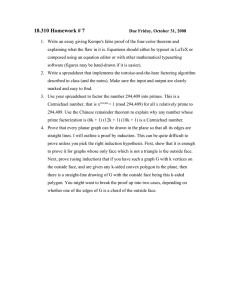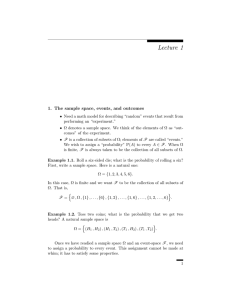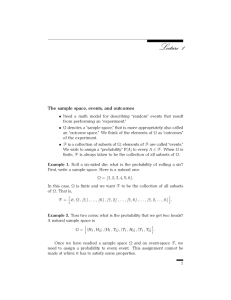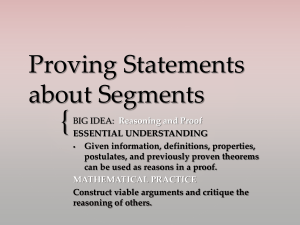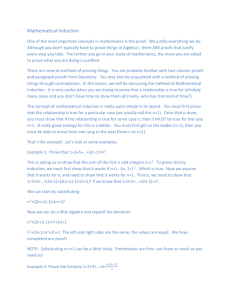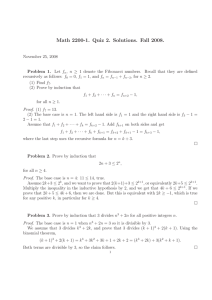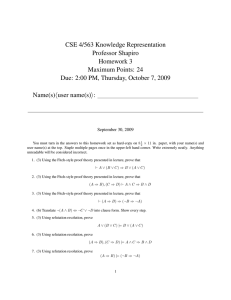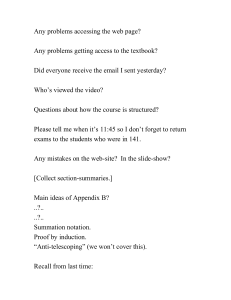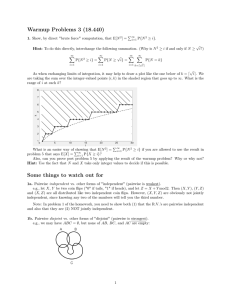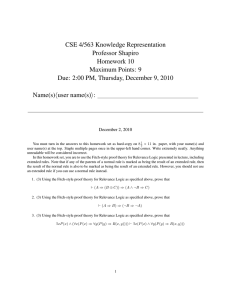Warmup Problems (18.440, 2/17/2015)
advertisement
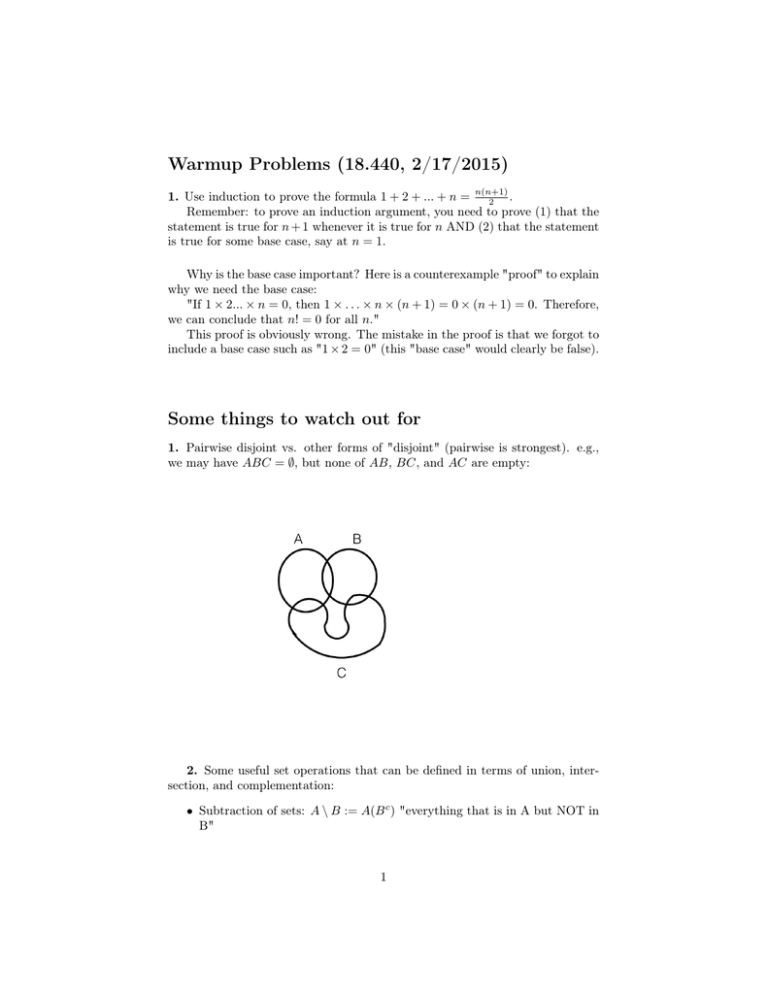
Warmup Problems (18.440, 2/17/2015) . 1. Use induction to prove the formula 1 + 2 + ... + n = n(n+1) 2 Remember: to prove an induction argument, you need to prove (1) that the statement is true for n + 1 whenever it is true for n AND (2) that the statement is true for some base case, say at n = 1. Why is the base case important? Here is a counterexample "proof" to explain why we need the base case: "If 1 × 2... × n = 0, then 1 × . . . × n × (n + 1) = 0 × (n + 1) = 0. Therefore, we can conclude that n! = 0 for all n." This proof is obviously wrong. The mistake in the proof is that we forgot to include a base case such as "1 × 2 = 0" (this "base case" would clearly be false). Some things to watch out for 1. Pairwise disjoint vs. other forms of "disjoint" (pairwise is strongest). e.g., we may have ABC = ∅, but none of AB, BC, and AC are empty: 2. Some useful set operations that can be defined in terms of union, intersection, and complementation: • Subtraction of sets: A \ B := A(B c ) "everything that is in A but NOT in B" 1 • Symmetric difference of sets: A4B := (A ∪ B) \ AB = AB c ∪ Ac B "everything in A or in B but NOT in both" 3. Some useful facts about sets • P (A ∪ B) = P (A) + P (B) − P (AB) We can use a Venn diagram to prove this: basically, the P (AB) is doublecounted if we do P (A) + P (B), so we must subtract P (AB) once from this sum to get P (A ∪ B): • P (A ∪ B) = P (A) + P (B) if and only if A and B are "almost everywhere" disjoint (i.e., P(AB) = 0). • P (A \ B) = P (A) − P (B) if and only if B is "almost everywhere" a subset of A (i.e. the part of B not contained in A has probability 0: P (A \ B) = 0 ). • P (AB) = P (A)P (B) means the events are independent, by definition. Warning: P (AB) is NOT equal to P (A)P (B) in general! • The complement of a set depends on the sample space "S": Ac = S \ A. • P (Ac ) = 1 − P (A). This is true regardless of S, since P (S) = 1 always. 2
